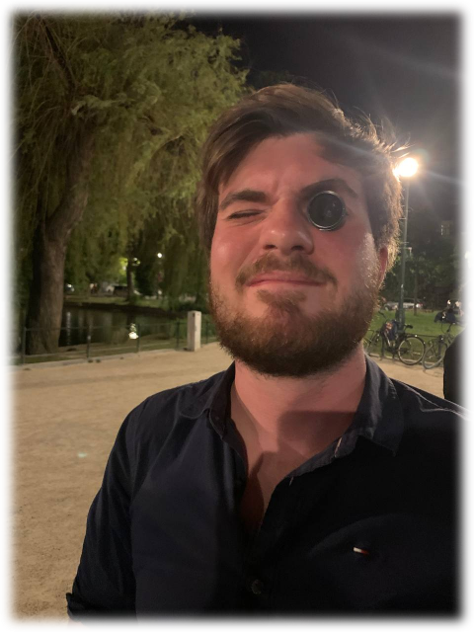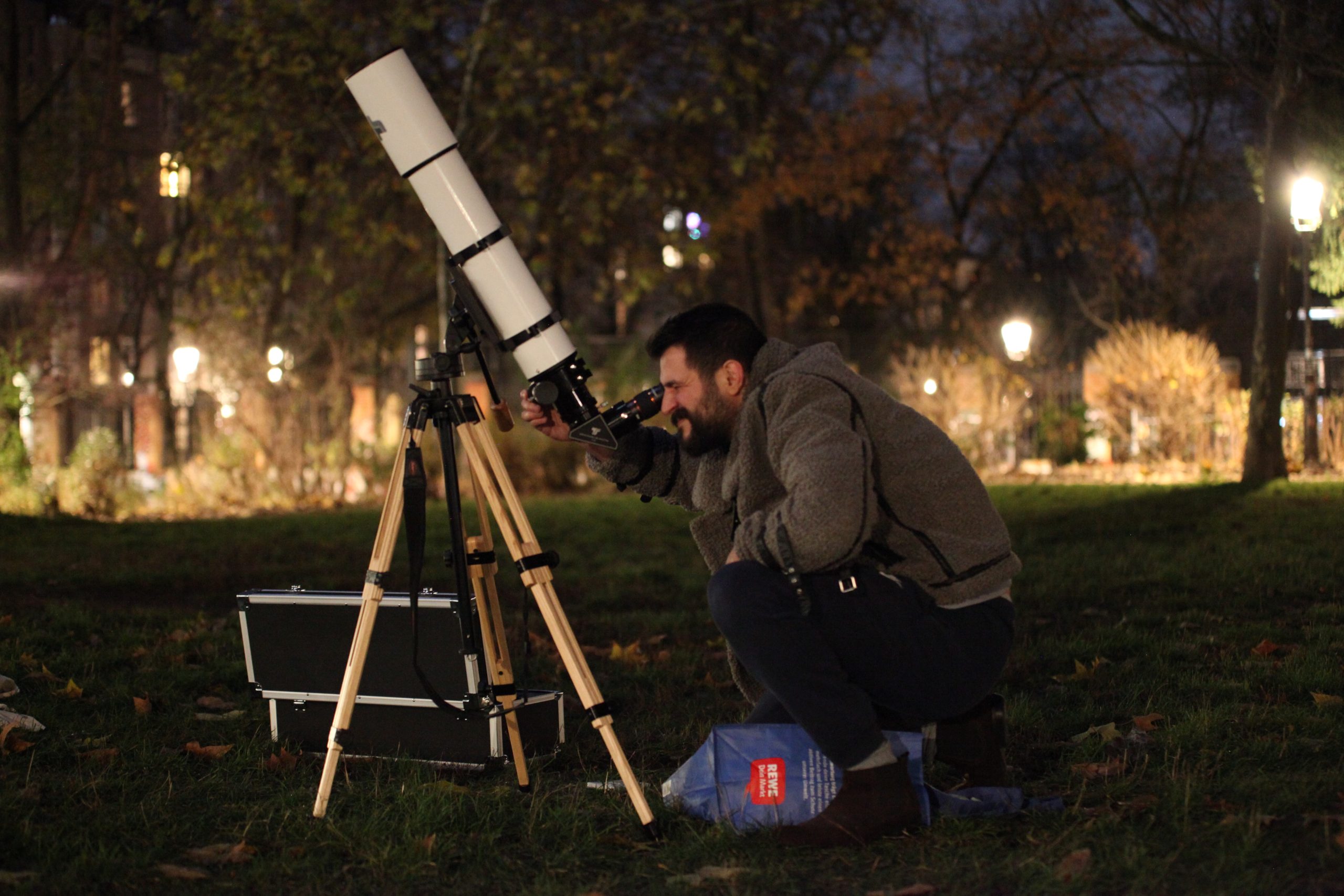
“Here. Wear these like sunglasses and look around.”
I handed him a neutral density filter. We use them in the telescopes on nights when the moon is too bright. Too much light through the eyepiece is blinding, so we use these gray pieces of glass to reduce the light and create a more pleasant viewing experience.
“Look around at the square. Can you still see?”
“Yeah, definitely! The streetlamps don’t disturb my eyes as much either.”
When people look through this filter, we are asking them to imagine their environment with less light. Of all the interventions that are possible by light designers and architects, what if we just all started wearing sunglasses? Sometimes, people find that glare from streetlamps inhibits their vision, and that they would prefer to wear sunglasses at night.
“If they dimmed the light to this level, would you still feel safe?”
“Hmm. I think so, but I’m not sure. Maybe it’s a little too strong. But we can definitely use less light here, and I like better the appearance of the street lamps when they don’t blind me.”
This second question is a very difficult one. There is no wrong answer. We’re attempting to create dialogue about the accepted brightness level in public spaces. Light makes us feel safe at night. Otherwise we wouldn’t use them! And it’s also natural to feel that more illumination makes us feel safer. Criminological research shows that when it comes to light at night, there is a difference between the perception of safety and the reality of safety. Nevertheless, it is our perception of our fears that will drive decision making. If some people claim they feel safe with dimmer lights, the dialogue moves in a new direction. Indeed, a lot of people think they would still feel safe, if the light was filtered.
Now comes the final question.
“How much light do you think the filter blocks?”
We’ve run this experiment informally with people thousands of times over the years. Most of the time, people guess that we’ve handed them a filter that blocks 10 to 20% of the light. So 80% transmission. Sometimes people guess more, and its not uncommon that people guess 50 or 60%. When I do this experiment with photographers, I tell them not to look at the side of the filter. The ND strength is written, and that’s cheating.
It’s very rare that someone guesses the correct figure.
“This filter blocks NINETY percent of the light. This is what Flagey would look like with 10 times less light. Using 10 times less electricity.”
“No! That’s impossible. Really?” This is shocking information, even to some optical engineers. Why does everyone underestimate the power of this filter. It’s because our eyes can very quickly adapt to new lighting situations. Our perception of bright and dark is anchored to whatever is the brightest light source in our field of vision. The eye’s response to different levels of brightness is logarithmic, similar to the ear. What that means: doubling the amount of light doesn’t correspond to the perception that we’re using twice as much electricity.
In 2021, the city of Tucson experimented with dimming the lights at night, by up to 70%. Chris Kyba et. al then studied this effect with satellite footage. When residents were asked for their opinion about the experiment, many didn’t even notice there was an experiment! We use a logarithmic unit for sound – the Decibel. Why is there no logarithmic unit for light?

